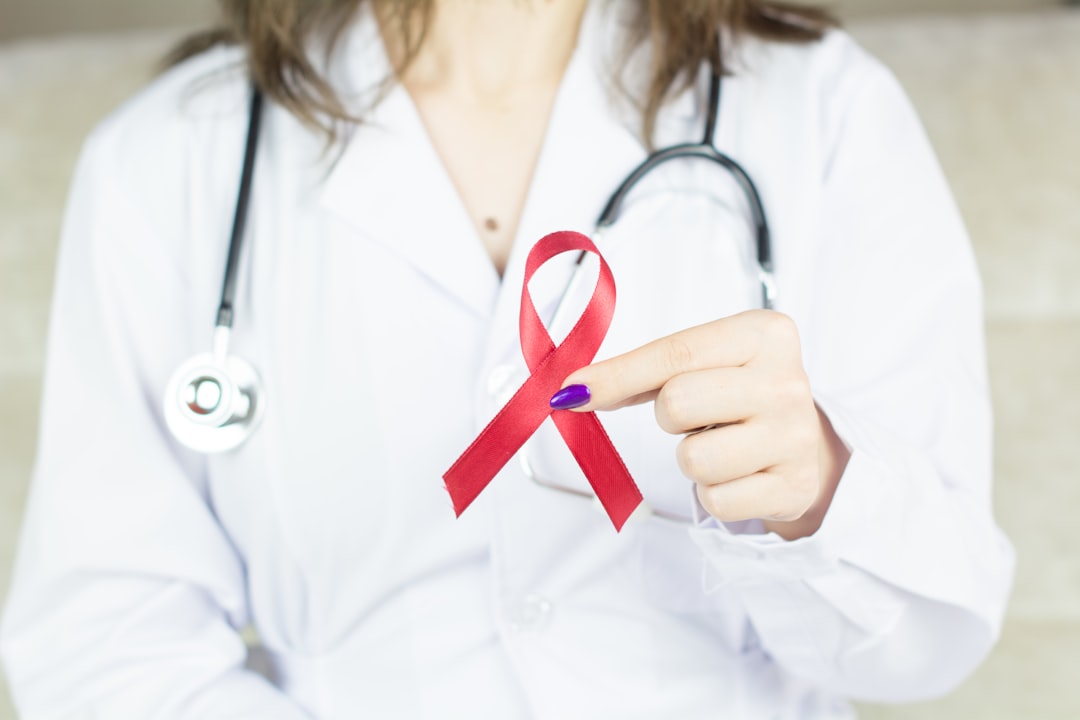

Engage prospects with a scan and streamline customer engagement with FREE QR code marketing tools by Sona – no strings attached!
Create a Free QR CodeFree consultation

No commitment

Engage prospects with a scan and streamline customer engagement with FREE QR code marketing tools by Sona – no strings attached!
Create a Free QR CodeFree consultation

No commitment
QR codes have transformed from a simple curiosity to a powerful strategic tool that bridges offline engagement with digital action. For AIDS clinics, these codes provide an accessible and highly effective way to gather patient feedback, increase engagement at HIV testing centers, and streamline the collection of insights regarding HIV treatment options and support services. When deployed thoughtfully, they remove friction from the process of listening to patients and community members, which directly supports better care.
Collecting meaningful, timely feedback from patients has long been a challenge for AIDS clinics. Traditional methods such as paper surveys and manual outreach often result in fragmented feedback, low participation rates, and a lack of real-time insights. This can lead to valuable input being missed, especially from individuals who might not fill out forms or engage directly, leaving critical voices unheard. QR-enabled feedback brings these interactions into the moment and into a secure digital workflow.
In an environment where rapid, actionable insights are essential to elevating care, reducing friction in the feedback process is vital. Modern techniques, including strategic deployment of QR codes in healthcare marketing%20(1)%20(1).pdf), empower patients and visitors to easily contribute feedback on their terms, securely and privately. The result is richer data and more immediate insight that supports targeted interventions, stronger educational outreach, and measurable improvements in patient outcomes across prevention, testing, and treatment programs.

Missing out on high-value input and real patient sentiment can limit a clinic’s ability to respond promptly or demonstrate its impact. QR codes bridge the gap between in-person interactions and digital feedback tools, making it seamless to collect and act on input in ways that paper or static channels never could. Because scans can be anonymous and instant, they reduce the stigma or hesitation that might prevent someone from speaking up in person.
To maximize participation, treat QR-based feedback as part of your care experience design. Ensure every key moment has a corresponding, easy-to-scan prompt that explains the value of sharing a response. Keep surveys short, mobile-friendly, and available in multiple languages. Add a clear benefit statement, such as the ability to receive resources, event reminders, or priority callbacks if the user chooses to leave contact details.
Steps include:
Example: A clinic that replaces end-of-visit paper surveys with a QR-linked mobile form at its HIV prevention program sees participation double, data-entry errors drop to near zero, and satisfaction gaps surface immediately by site and time of day. That same data drives staff coaching and room-flow improvements that reduce average wait times within two weeks.

AIDS clinics face challenges such as privacy concerns, stigma, language barriers, and unpredictable engagement. Often, important patient interactions are not captured digitally, resulting in missed opportunities and gaps in care. Many individuals will read informational posters, take a brochure, or attend a community event, yet never complete a form or volunteer feedback. QR codes create a low-pressure bridge from those offline moments to a secure digital space where people can respond on their own time.
They also enable speed. Patients do not need to download an app to share their perspective or access resources, and staff do not need to carry clipboards or type handwritten notes into a system later. With a single scan, a patient can answer a two-minute survey, request a callback, or open multilingual materials about treatment adherence. This creates a more inclusive experience for patients who prefer self-directed, private interactions and strengthens patient engagement.
This approach shifts insights from occasional and anecdotal to continuous and data-driven. It helps ensure that no one is left behind, even when their initial interaction is anonymous, because QR data can guide follow-up programs, content localization, and service improvements across HIV prevention, testing, treatment, and support.

AIDS clinics require flexible tools to unify data collection and outreach for diverse services. QR codes can serve multiple roles, from a simple survey link to a secure contact handoff, depending on where they are placed and what action you want to trigger. Choosing the right format ensures that the experience fits the context and the user’s needs.
Use dynamic codes when you anticipate updates or need detailed analytics, and reserve static codes for fixed, low-stakes destinations. When in doubt, opt for dynamic codes so you can iterate on content and track results without reprinting.
Dynamic QR infrastructure prevents fragmentation. Central management means any change to a destination, language, or campaign setting propagates instantly to every print or digital placement, which keeps materials current and avoids confusion when guidelines evolve.

Choosing the right environments for QR integration ensures high-value engagement is not missed. Start by mapping your physical spaces and touchpoints, then assign specific goals to each placement. Waiting rooms can capture general sentiment, consultation rooms can solicit care-specific feedback, and community events can collect interest in testing or support.
Design and positioning matter. Place QR codes at eye level, include a clear call to action, and ensure good lighting. Provide a short URL as a backup for those without a camera-enabled device. If privacy is a concern, position the code where patients can scan discreetly and use language that emphasizes confidentiality.
Optimizing visibility and relevance ensures your QR program gathers comprehensive outreach data while respecting privacy. Over time, scan patterns reveal which spaces and messages drive engagement, guiding facility layout, staffing adjustments, and campaign investment.

Transitioning from manual to digital records addresses major operational pain points. QR codes reduce the distance between a moment of need and a helpful action, which improves both patient experience and staff workflow. The following use cases span the continuum of care and outreach for AIDS clinics.
By making every printed item and surface interactive, you can replace guesswork with measurable engagement. Patients scan when the moment is right for them, and staff receive data that is easy to analyze and act upon.
Implementing these workflows consistently improves participation rates, raises data quality, and frees staff from repetitive manual tasks. Clinics can focus more energy on tailored education and follow-up, which has a direct impact on adherence and long-term outcomes.
High-need patient groups often remain invisible. Anonymous event attendees, first-time testers at a mobile unit, or hesitant visitors may not be entered into a CRM, which leads to missed follow-ups. QR codes provide a way to capture intent and context without forcing identity up front. Over time, scanners can choose to identify themselves to receive benefits, while your team still learns from aggregate, anonymized patterns.
Segmentation begins with context. The same person who scans at a testing tent is likely in a different stage than someone who scans a refill QR on a medication bag. Assign tags to each QR code that reflect the placement and purpose. Then route these signals into your CRM or analytics platform to trigger relevant messages, content, or staff tasks. For retargeting, see intent-driven retargeting.
Smart integrations turn scattered scans into structured signals. With Sona QR, you can automatically sync segments to platforms like HubSpot, Salesforce, or email service providers, ensuring timely outreach, targeted education, and an efficient path from interest to care.
AIDS clinics often manage outreach piecemeal across print, events, and digital, creating fragmented insights and uneven measurement. QR codes unify these efforts by making every channel interactive and measurable. They connect offline moments to digital journeys so your team can learn what resonates, refine messages quickly, and deliver timely support.
The key is to keep destinations consistent with campaign goals. For example, general awareness materials should link to short educational pages or event calendars, while clinic signage should lead to feedback forms or appointment requests. A central platform like Sona QR helps ensure your codes, links, and analytics remain coordinated.
Synchronized scan data across these touchpoints gives leadership a connected view of engagement. It becomes easier to attribute outcomes to specific campaigns, justify investments, and scale what works.
Follow these clear steps for successful QR initiatives. Align each step to a concrete clinic outcome, such as improving satisfaction, increasing testing follow-through, or reducing missed refills. Keep privacy, language access, and mobile usability at the center of every decision, and involve frontline staff in planning so your placements and messages reflect real-world flow.
Before you begin, define how you will measure success. Typical metrics include scan rate, survey completion rate, appointment requests, refill submissions, and time-to-follow-up. With baselines in place, you can A/B test designs, CTAs, and placements to steadily improve results without adding staff burden.
Clarify what you want the QR experience to achieve. Examples include increasing post-visit feedback, improving adherence support, recruiting for support groups, or promoting mobile testing events. A single campaign with a focused goal is more effective than a scattered approach.
Choose static codes for fixed destinations like a PDF or a permanent information page. Use dynamic codes for campaigns that need tracking, retargeting, or frequent updates. When you want to personalize content or compare placements, dynamic codes are the best choice.
Make it easy and inviting to scan. Use a high-contrast design, adequate size for the viewing distance, and a clear call to action such as Scan to share feedback or Scan for refill support. Add your logo and brand colors to build trust, but maintain scannability.
Place codes where they align with the action you want. Feedback codes fit best near exits or in post-visit emails. Adherence codes belong on medication bags and pharmacy signage. Event codes should appear on banners, badges, and flyers.
Treat your QR program as a learning engine. Use analytics to find bottlenecks and opportunities, then refine code design, placement, and landing pages. Share wins and lessons with staff so they can promote the experience confidently.
Connecting scans and outcomes is crucial. Fragmented data makes it difficult to demonstrate impact or know which campaigns deserve more investment. A robust analytics process links each QR scan to downstream actions, such as completed surveys, scheduled appointments, support group signups, or improved adherence, so teams can respond quickly and double down on what works. For measurement frameworks, explore offline attribution.
Start with transparency and privacy. Communicate how feedback will be used and what data is collected. For anonymous interactions, focus on aggregate insights like peak scanning times or content viewed. For identified interactions, ensure secure handling, clear consent, and integration with existing records to avoid duplication and confusion.
With Sona QR and Sona.com, you can centralize code management, dashboard analytics, and attribution. Real-time data helps you optimize while campaigns run, and identity resolution features can connect anonymous early scans to later identified patients where appropriate and consented, giving you a complete picture from first touch to care follow-through.
To sustain success, embed QR thinking into your clinic culture. Train staff to introduce the purpose of scanning in a friendly, non-intrusive way, and keep codes visible and easy to access without feeling pushy. Refresh creative and CTAs regularly so patients notice new reasons to scan.
Over time, expand beyond feedback to include service discovery, adherence support, and community engagement. Each new use case enriches your dataset and strengthens the patient journey, while automation limits added workload.
This layered approach gathers actionable data, eases administrative workload, and continually improves patient experience. When combined with a centralized platform like Sona QR, clinics can coordinate campaigns, monitor performance, and refine strategies with confidence.
Strategically deployed QR codes empower AIDS clinics to streamline patient feedback, modernize workflows, and generate actionable insights. By bridging offline and online engagement and unifying data, clinics can adapt services, strengthen relationships, and achieve measurable improvements in care. Start with one high-visibility use case, learn from scan and completion data, and scale to additional touchpoints as you validate what works in your setting.
Adopting these digital strategies offers a path forward for leadership in HIV prevention, treatment management, and community health impact. From improving the quality and timeliness of feedback to reducing staff burden and connecting people to the right resources faster, QR codes are a practical, cost-effective way to make every interaction count. When you are ready to centralize codes, automate follow-ups, and attribute outcomes end to end, platforms like Sona QR and Sona.com provide the infrastructure to do it securely and at scale. Start creating QR codes for free.
QR codes have revolutionized AIDS clinics by transforming patient feedback collection into an efficient, real-time process that enhances care quality and patient satisfaction. Beyond simply gathering insights, QR codes enable clinics to engage patients seamlessly, improve service delivery, and identify areas for impactful improvements with ease. Imagine instantly capturing candid feedback after every visit and using that data to tailor personalized care strategies that truly make a difference.
With Sona QR, AIDS clinics can create dynamic, trackable QR codes in seconds, update feedback campaigns without the hassle of reprinting materials, and connect every scan to actionable outcomes. This ensures no feedback opportunity is missed and empowers clinics to continuously elevate patient experiences and health outcomes. Start for free with Sona QR today and turn every patient interaction into a powerful tool for care excellence.
AIDS clinics provide HIV testing, treatment consultations, pharmacy services, educational sessions, support groups, and after-hours helpline access.
You can get tested for HIV by visiting an AIDS clinic where QR codes often link to appointment scheduling, testing information, and resource libraries to support easy access.
Appointments can be scheduled by scanning QR codes placed on clinic materials or online, which direct you to mobile-friendly appointment request forms.
Treatment options include antiretroviral therapy consultations, medication adherence support, refill services, and side-effect management, often supported by QR-linked resources.
Support groups can be found by scanning QR codes on clinic handouts or event badges that link to registration and information about ongoing sessions.
Hours of operation vary by clinic and can often be found by scanning QR codes on clinic signage or materials that provide current schedules.
The article does not specify costs, so it is best to contact your local AIDS clinic directly or use QR-linked resources to inquire about fees and government funding.
The article does not list specific clinics, but QR codes and linked digital platforms can guide you to local resources, including government-funded clinics.
Educational materials are accessible via QR codes on brochures, posters, and flyers that link to multilingual videos, FAQs, and prevention resources.
AIDS clinics use QR codes to collect real-time, anonymous feedback, streamline surveys, deliver resources, schedule appointments, and integrate data with electronic health records for better care.
Use Sona QR's trackable codes to improve customer acquisition and engagement today.
Create Your FREE Trackable QR Code in SecondsJoin results-focused teams combining Sona Platform automation with advanced Google Ads strategies to scale lead generation

Connect your existing CRM

Free Account Enrichment

No setup fees
No commitment required

Free consultation

Get a custom Google Ads roadmap for your business






Launch campaigns that generate qualified leads in 30 days or less.
